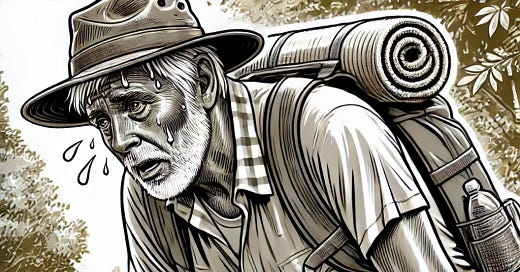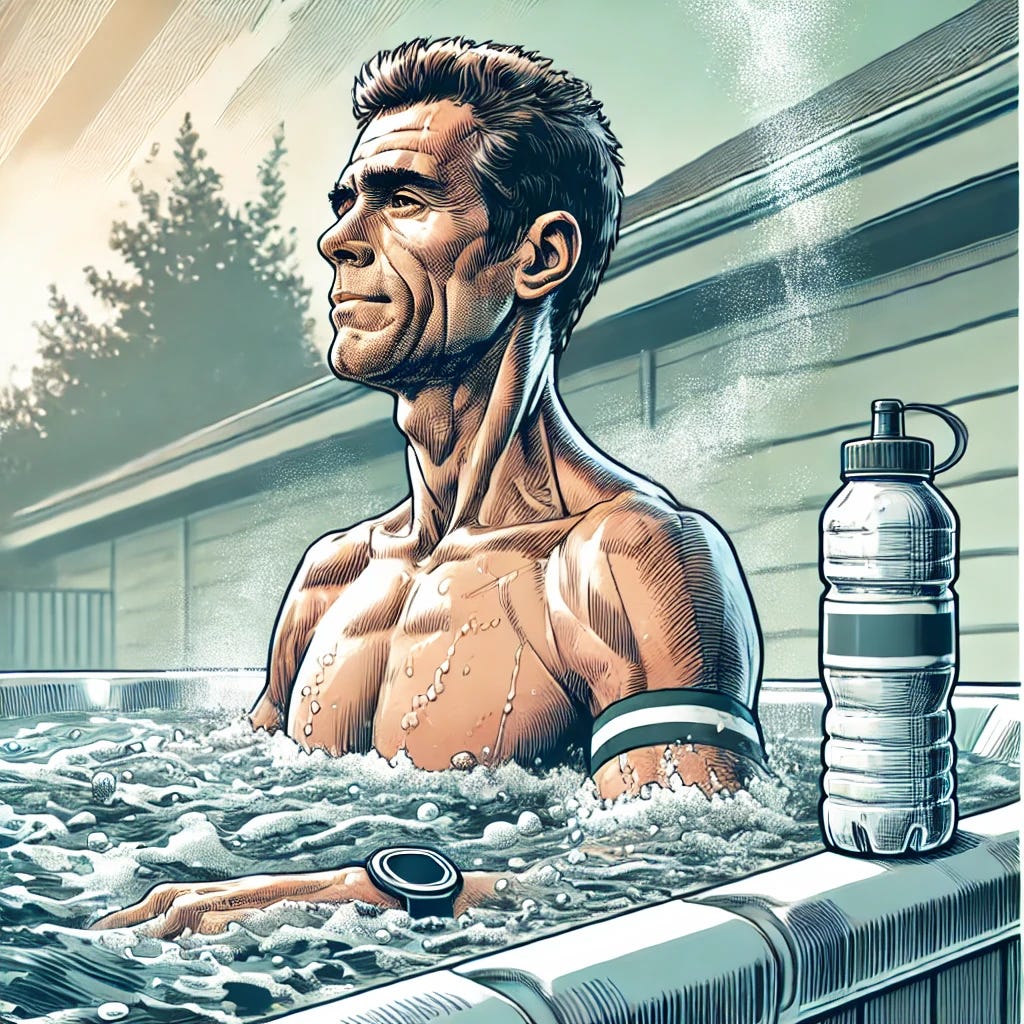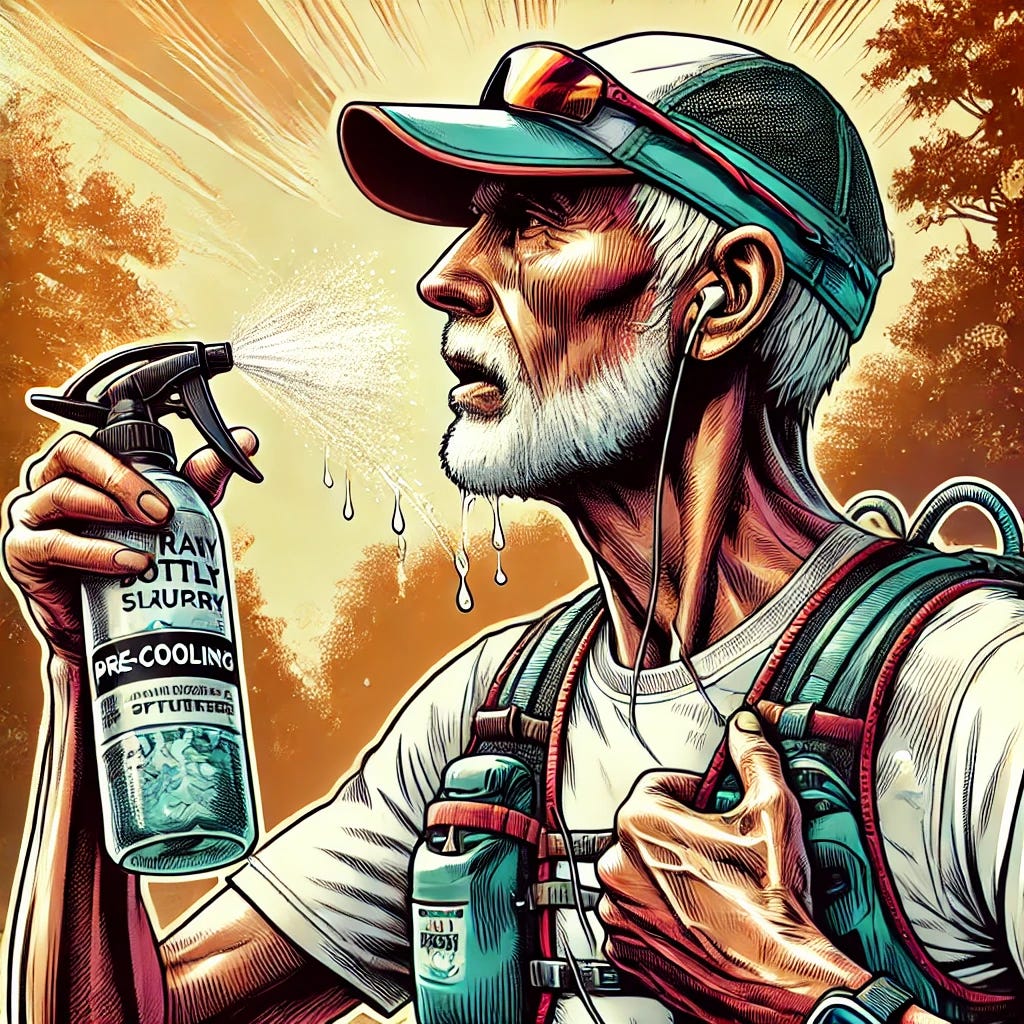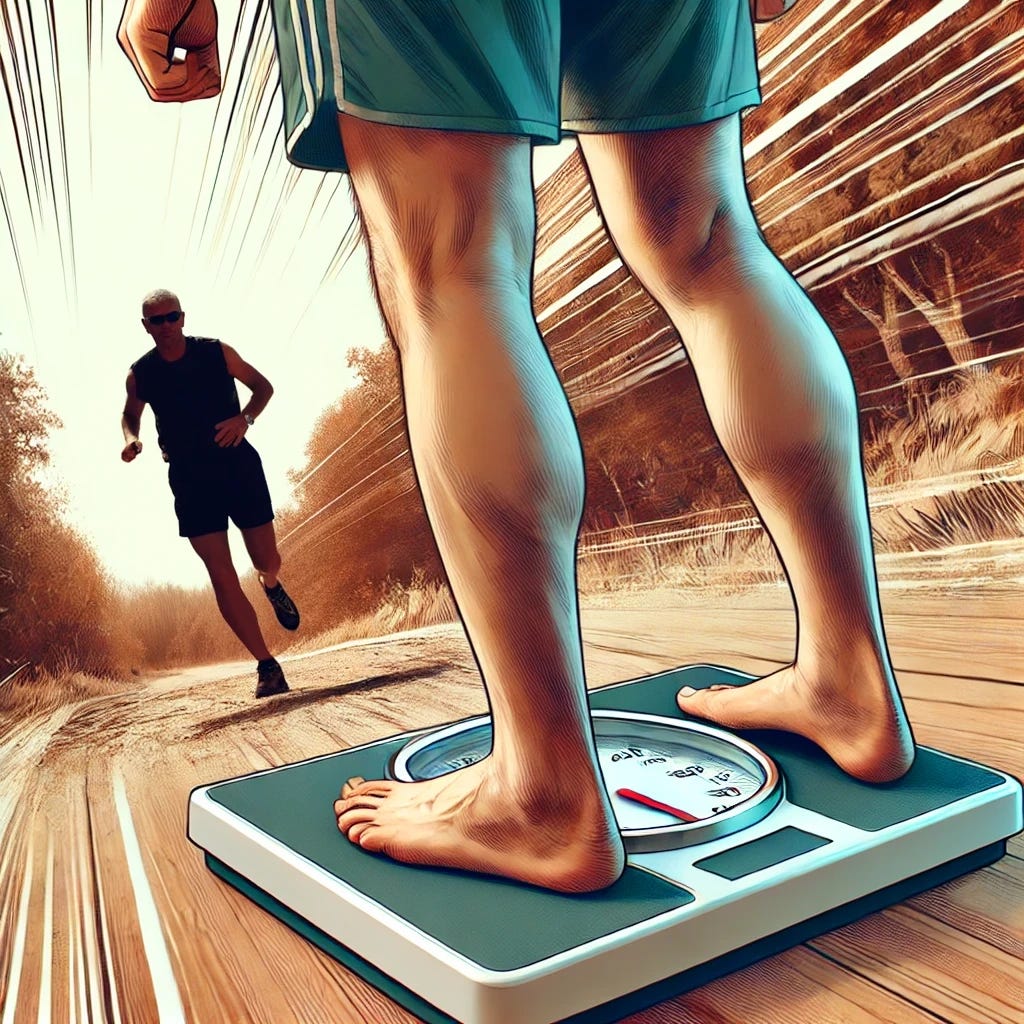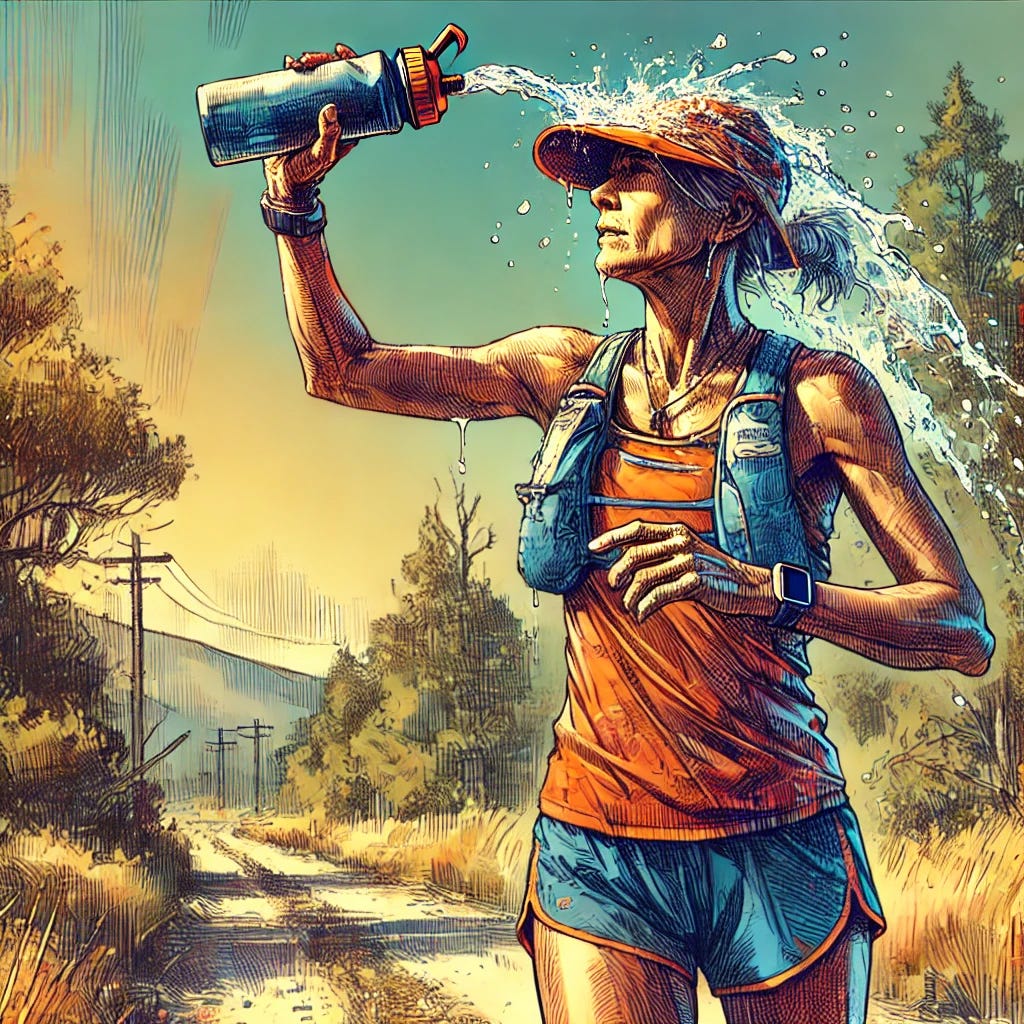HOW TO BEAT THE HEAT - I should've known better
Exercising in hot environments requires special attention to managing your core temperature to avoid heat-related performance issues or illnesses. Find out what I learned.
Background
Participating in endurance training requires an ability to get rid of your body heat effectively. According to sports science researcher Stephen Cheung the poor transfer of heat from the body will end up being stored. This can cause a slowing down of the body due to excessive core temperature. If not addressed the next step is overheating. According to Dr. Cheung a temperature increase of just “2 degrees Celsius will lead to heat problems and likely heat stroke”.
My Personal Example
Several years ago, when I was in my late 50s, I went on a hike through the Grand Canyon. We were doing a rim-to-rim hike from the Northern Rim to the Southern Rim in one day. "Not a big deal," I thought, since back in my late 20s and early 30s, I had done several of these climbs while helping struggling high schoolers out of the canyon. Recalling how relatively easy the hike was, I didn’t put too much effort into preparation. My typical 2-3 times a week bike rides and sporadic hikes seemed like a good base. I planned to add a couple of longer hikes, maybe 2-3 hours each, in the month leading up to our Grand Canyon trip, and I thought I would be fine.
We went in late September, so the temperatures were moderating. Most of our climb had moderate temperatures in the upper 70s and low 80s. I wasn't too worried about the heat. Back when I did more long-distance climbing, running, and cycling, I used to tell myself that I preferred the heat. However, as someone who coaches others on how to prepare for such events, I was aware of the importance of staying hydrated and cool and not underestimating the potential hazards of heat.
I performed a couple of sweat rate tests to determine my hydration needs. The conditions were warm but not hot, similar to what I expected. My water loss was close to 50 ounces per hour, or a little less than a liter and a half, which is more than 3 lbs of water lost every hour. Ouch. I definitely needed to plan to carry a lot of fluids, and I realized my sodium replacement would need to be significant too. I'm a salty sweater, as evidenced by the salt rings on my hat and shorts. I estimated I would need around 500-700 mg of sodium per hour, based on a loss of 220 mg per pound. I planned to have a couple of water bottles to fill and mix with carbs, but my main fluid supply would come from my CamelBak (hydration pack), which I could drink from hands-free. I practiced my hydration strategy a bit on my last couple of preparation hikes, but they were short.
Cut to the chase: We traveled to the North Rim to stay the night before hiking the canyon. I hadn't done much backpacking recently (virtually none) and wasn't used to sleeping on the ground, so I only slept a few uncomfortable hours. I probably should have hydrated better that day but didn’t worry too much about it. We left early in the morning while it was still very cool, and my only concern was whether my calf would seize up with all the down climbing. Unfortunately, one of my fellow hikers exacerbated an old ankle injury and had to turn back halfway down the rim. I, on the other hand, was cruising and feeling very good since my lower legs were fine. By the time we reached the bottom of the canyon, I felt confident and pushed the pace a bit. My hydration seemed to be working fine, although I ran out of fluids after a few hours. Still, I wasn't concerned, thinking I had enough fluids in me to last until we reached Phantom Ranch, where I could refill. After about 4-5 hours of hiking, it was hotter at the bottom, but not too bad. However, at the lodge, I noticed my hydration pack hose had been pinched, and over half of my planned fluid was still in the bladder. I knew something was up since I couldn’t stop drinking the lemonade at Phantom Ranch. I couldn’t get enough, and the colder, the better. I also had a strong compulsion to sit in the nearby stream but ultimately decided not to get my clothes wet.
This was probably the first sign that the heat was getting to me. My internal temperature was rising, even though the environmental temperature wasn’t too bad. I filled up my CamelBak with fluids, drank a couple more lemonades, and started the climb up the Southern Rim. I felt strong but a bit hot. About a mile into the climb, I started feeling weak—not leg fatigue from climbing, but more like I was running low on fuel. I continued to eat, even though I had just had a big lunch at the lodge, and kept drinking from my hydration pack. I didn’t think I was under-hydrated, but the odd fatigue mixed with a borderline floating feeling made me uneasy. I sometimes feel similar when my blood sugar is low, but this was different.
I saw a rest area with latrines and benches ahead and decided to use one, thinking I might have GI issues. Sitting there, I suddenly felt that something was seriously wrong. I had trouble getting up and out of the latrine and knew I was in trouble. The only way out of the canyon was to climb out, so I had to keep going. Back on the trail, I could barely function, moving only with tiny shuffle steps. I was hot, couldn’t keep fluids down, and couldn’t eat. Sitting on the side of the trail made me feel worse. My heart rate seemed fast but normal. I inched along, wondering if I would pass out.
Eventually, one of my buddies came looking for me. He immediately recognized I was in trouble, most likely suffering from heat exhaustion or borderline heat stroke. I assume the contributing factors included my age, lower fitness level, lack of proper training, limited hydration early in the hike, and having an older, heavier body that struggles to dissipate heat. When my body started storing heat early in the hike, my body reached a limit and almost shut down. The symptoms felt like someone had turned off a switch in my body. What I absolutely needed was shade and a way to cool down. In an endurance event, they would have put me in an ice bath.
In my case, there was little shade and half the rim still to climb. With encouragement from my friend, I continued. A ranger we met 2/3 of the way up said I had to keep going. He pointed out a small rest area with some shade, where I rested for a while. Eventually, I had to continue. It was miserably slow, but as the sun went behind the ledge of the rim, bringing shade, my speed and comfort level increased. I made it out with a firsthand understanding of the dangers of not taking the heat seriously.
Physiologically Speaking
So how can we better insure that we will not overheat? Again, according to Dr. Cheung we need to address all of the following heat transfer mechanisms.
RADIATION
To get rid of heat through radiation you should try to avoid dark clothing. A white shirt can improve heat transfer by 25% compared to black t-shirt.
I was wearing a dark red shirt :/
CONVECTION
When training indoors use a fan. More wind will help cool body due to convection. It is easier to cool your body due to convection when cycling compared to running or hiking because of the wind produced with speed.
There was little to no wind on my canyon hike
EVAPORATION
It’s best to find a way to evaporate all or most of your sweat. You can be very effective at unloading your heat by avoiding humid environments, removing excess clothing, and try to find more breathable clothing. However in humid environments it can be very difficult to use the mechanism of evaporation.
I could have done better choosing my clothing :/
Strategies
Here are some strategies to help limit the danger and increase performance when exercising in the heat.
Acclimatization
If time permits you should try to set aside some training time for acclimatization.
Before you reach your taper for an event that you a preparing for, try to acclimate for 10-14 days. Ideally you should try to do this 3-6 weeks out from your event.
Train in a hot environment
During the acclimation period try to train in heat for 1-1.5 hours per day
- to improve sweat rate and increase evaporative cooling
- indoors works well, add clothing
- ideal temp is 35 degrees Celsius (or 95 degree F)
- if ideal temp can't be reached you may need to go a little longer
Hot water immersion
If you have access to a jacuzzi, hot water immersion particularly effective technique for acclimating to heat and promoting positive adaptations to enhance heat tolerance. The protocol involves a ten-day heat acclimation regimen wherein you will:
exercise daily for a minimum of 40 minutes to elevate your core temperature.
Each workout is followed by a 40-minute immersion in a 104-degree bath, with the water reaching up to the neck (similar to soaking in a jacuzzi), to sustain a high core temperature.
Special Note: you should plan to hydrate during both the workout and water submersion.
Pre-cooling
Before hike, run, or ride events in a hot environment try perform these cooling strategies. Pre-cooling means before race/event starts on the day of the race, try to cool down your body by using various pre-cooling techniques which can include:
cooling vests
cold water immersion
ice slurry ingestion or cold drinks
cooling packs
menthol cooling
facial water spray.
Studies have shown that pre-cooling can improve performance in hot environments.
Note: pre-cooling techniques above are generally NOT practiced with triathletes because they start their event in the water.
Hydrate Properly
Maintain proper hydration by utilizing the sweat rate tool to create an effective hydration schedule.
Clothing
Choose you clothing carefully. opt for light weight and lightly colored quick drying clothing on the day of the event.
Stay Cool
When you reach aid stations, pour water over your head and torso to optimize heat dissipation.
If you're running, wear a cap (not a visor) that you can pour water onto or into.
Older Athletes
For seniors engaging in exercise in the heat, it's crucial to be aware of how your body responds differently. Due to natural aging changes, your ability to cool down efficiently might be compromised—you may sweat less and have reduced blood flow to the skin. This makes you more susceptible to heat-related problems. Staying hydrated is vital, as is wearing suitable clothing and taking breaks in shaded spots to avoid overheating. Tailor your exercise routine to the conditions, and if you start feeling dizzy, excessively tired, or nauseous, it's essential to stop and rest in a cooler place. Your safety and well-being come first, so listen to your body and adjust your activities accordingly for a successful workout in the heat.
Remember that everyone's tolerance for heat varies, and it's crucial to prioritize safety when exercising in hot environments. If you're unsure about your ability to handle the heat, consider consulting a healthcare professional before engaging in intense physical activity in such conditions.
Ultimately, learning to manage your internal heat load will be immensely important if you want to continue to FINISH STRONG!
For a deeper dive into preventing overheating and optimizing your performance in hot environment click here.

